Looking at the global robot market, with the reduction of the labor force population in Japan and Europe, the rising labor costs of China and other emerging market countries, and the continuous increase in the demand for product quality, the scale of the robot market has grown significantly, and has maintained double digits until 2014 Increase. Moreover, the influence of the above background factors will continue to ferment in the future, and the scale of the robot market is still expected to expand further.
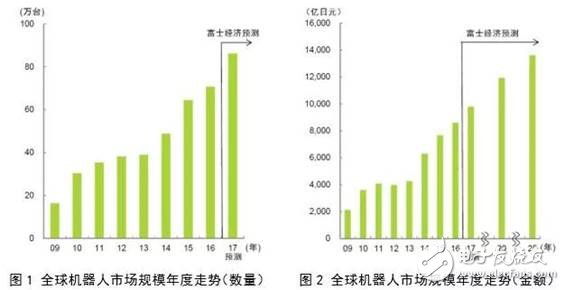
From the perspective of industry demand: the demand for robots from electronic equipment such as automobiles and semiconductors has grown significantly
From the perspective of the demand for industrial robots in different industries, the automotive and electronic equipment (semiconductor, etc.) fields have grown significantly. But at the same time, the demand for robots in other industries has been rising.


From the perspective of the type of industrial robots: driving, assembly, and handling robots are the most popular
From the perspective of the types of robots required in various industries, drive robots, assembly and handling robots are used the most. At the same time, robots for welding and painting are increasingly in demand in the automotive industry, while cleaning and handling robots are widely used in the electronic equipment industry.
From the perspective of the geographical distribution of industrial robots: Asian markets such as China have become growth engines
From the perspective of the geographical distribution of the industrial robot market, the number of industrial robots in Japan ranks first in the world, and one of the important reasons is the declining labor force. For Japan's manufacturing industry, in order to maintain high productivity, it is necessary to carry out a "revolution" to save labor, so the government vigorously promotes the use of robots. China is also facing a reduction in the labor force, coupled with a sharp increase in labor costs and the expansion of demand for improving product quality. China currently has the second largest number of industrial robots in Japan after Japan. From 2011 to 2016, the market scale of China's industrial robots has more than tripled.
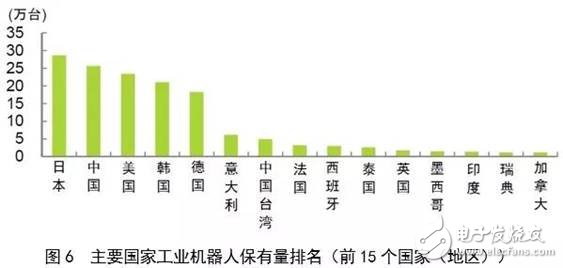
From 2013 to 2016, the density of industrial robots in China increased from 25 units per 10,000 in 2013 to 68 units per 10,000 in 2016, ranking 23rd in the world. The Chinese government intends to make China one of the top ten countries with the highest degree of automation in the world by 2020. To this end, the density of industrial robots in China will increase to 150 units per 10,000 people by 2020. Therefore, China's industrial robot market still has great growth potential. From the perspective of the distribution of industrial robots in China, the use of the automotive sector accounts for more than 20%. It is still expected to continue to increase in the future, and the growth of demand in other industries is also worth looking forward to. Overall, the Asian market has become the "engine" of global industrial robot growth.
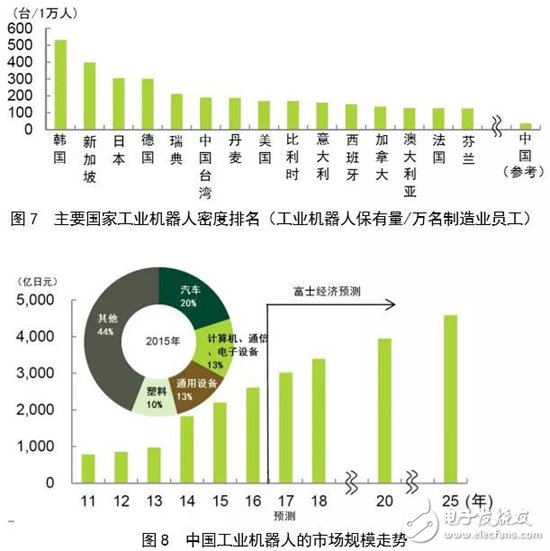
Global industrial robot giant's competition situation and future development strategy
Judging from the sales of major global industrial robot manufacturers, ABB, FANUC, Kawasaki Heavy Industries, Yaskawa Electric and KUKA are among the top five. In the future, the development strategies of these giants mainly include the following aspects: continue to develop the demand for industrial robots in various industries and increase sales; pay close attention to and occupy the high-growth Chinese market; further expand industrial robots by developing cooperative robots Field of use; respond to the challenges brought about by the rapid development of the Internet of Things (IoT).
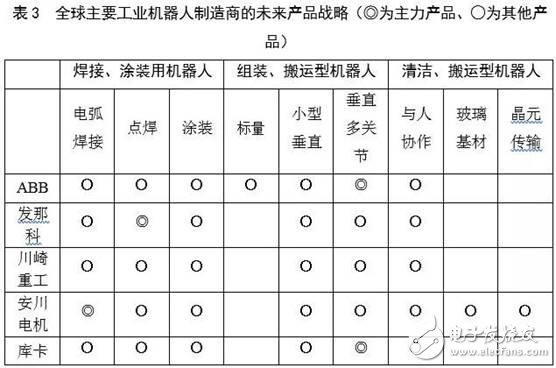
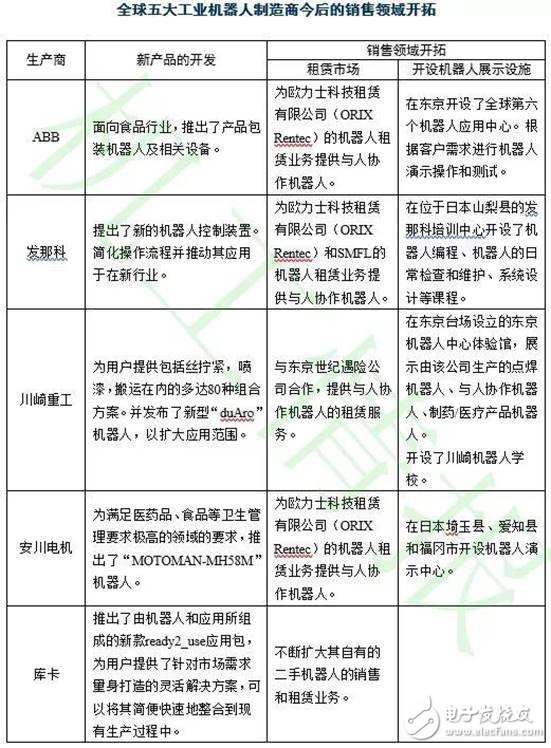
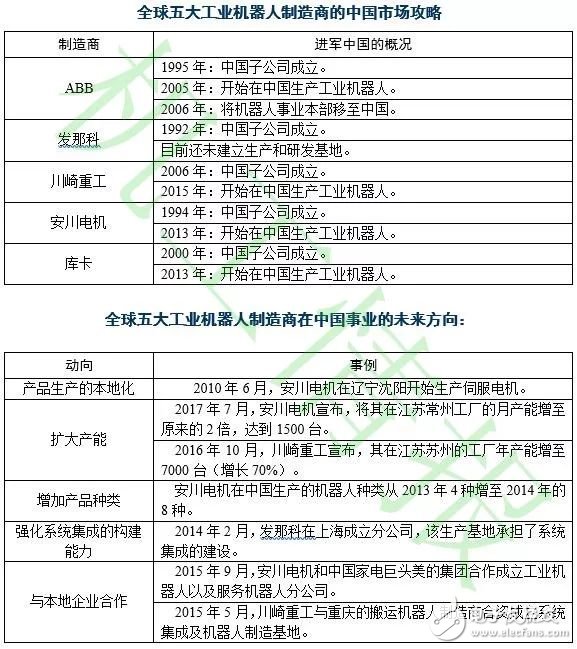
It is predicted that the global industrial robot market size will increase to US $ 111 billion by 2020.
China has become the world's largest consumer market for industrial robots since 2013 and it has remained so far. According to the International Robot Association (IFR) calculations, China's industrial robot sales are expected to increase from 3.4 billion U.S. dollars in 2016 to 5.89 billion U.S. dollars in 2020, with an average annual compound growth rate of about 14.72%. Under the influence of policy guidance and demand expansion, domestic industrial robot companies have embarked on a path of rapid growth by strengthening independent research and development or promoting cooperation between industry, universities and research institutes.
However, due to the long-term lag in core technology, there are still many shortcomings in my country's industrial robot industry, including the control of key parts and components, weak brand strength and lack of industry professionals. Compared with the robot brands of Germany, Japan and other countries, China's domestic robots have greater advantages in system integration and application, but the difference between the robot body and core components and the international giants is still large. There is still a clear gap.
L01-N Series Push Wire Connectors
Reflow Soldering Wire Connectors,Copper Clamping Wire Connectors,Pcb Wire Connectors,Smd Wire Connectors
Jiangmen Krealux Electrical Appliances Co.,Ltd. , https://www.krealux-online.com